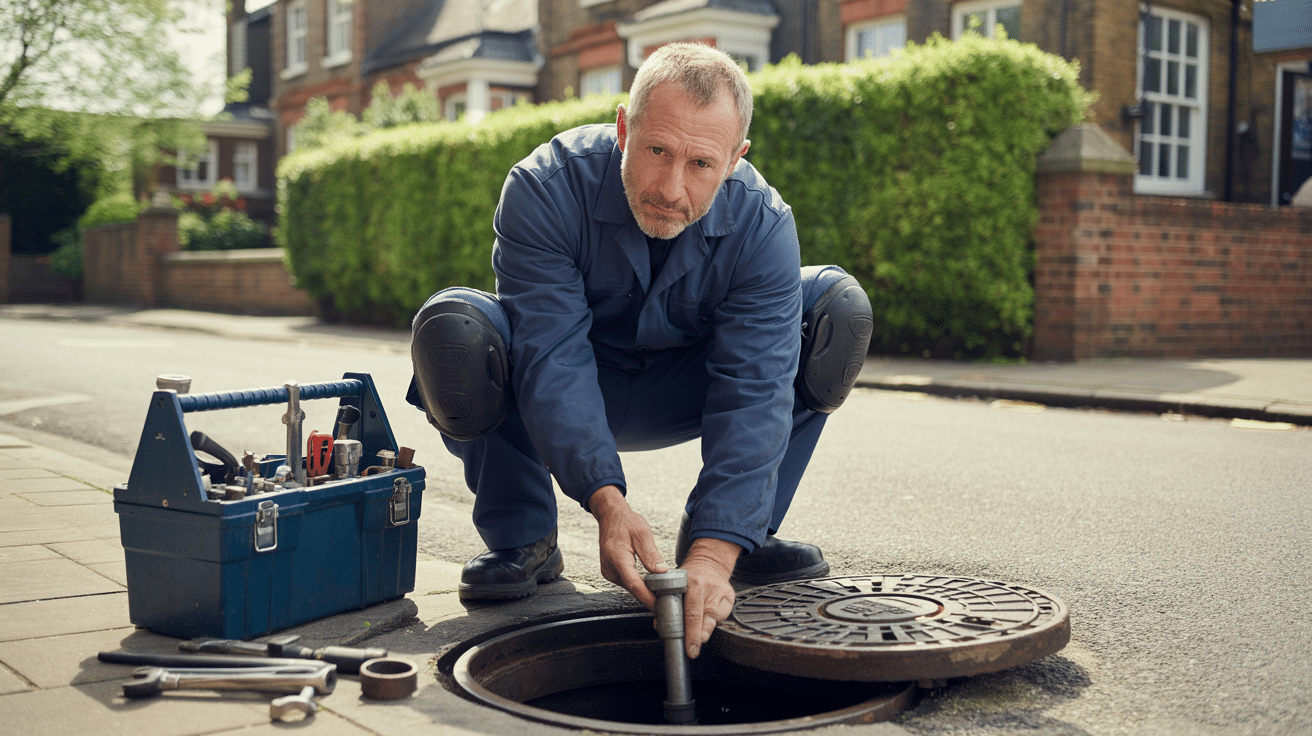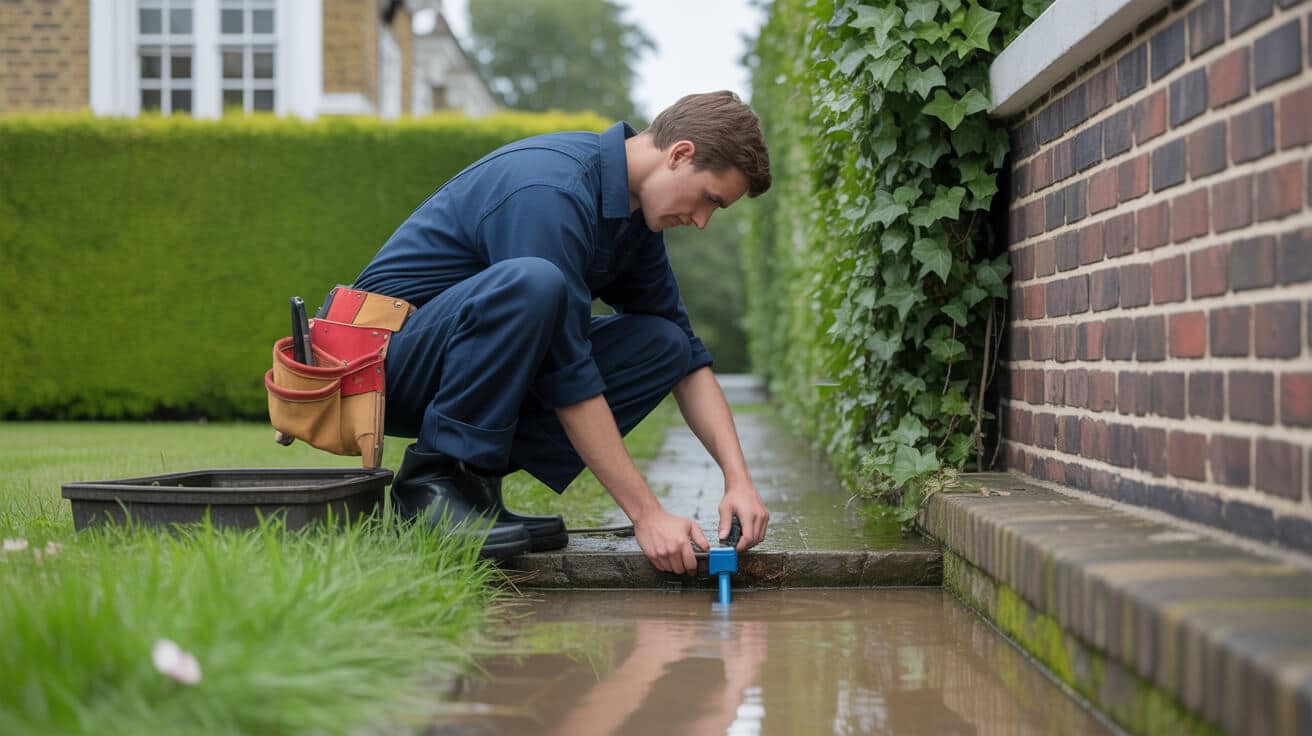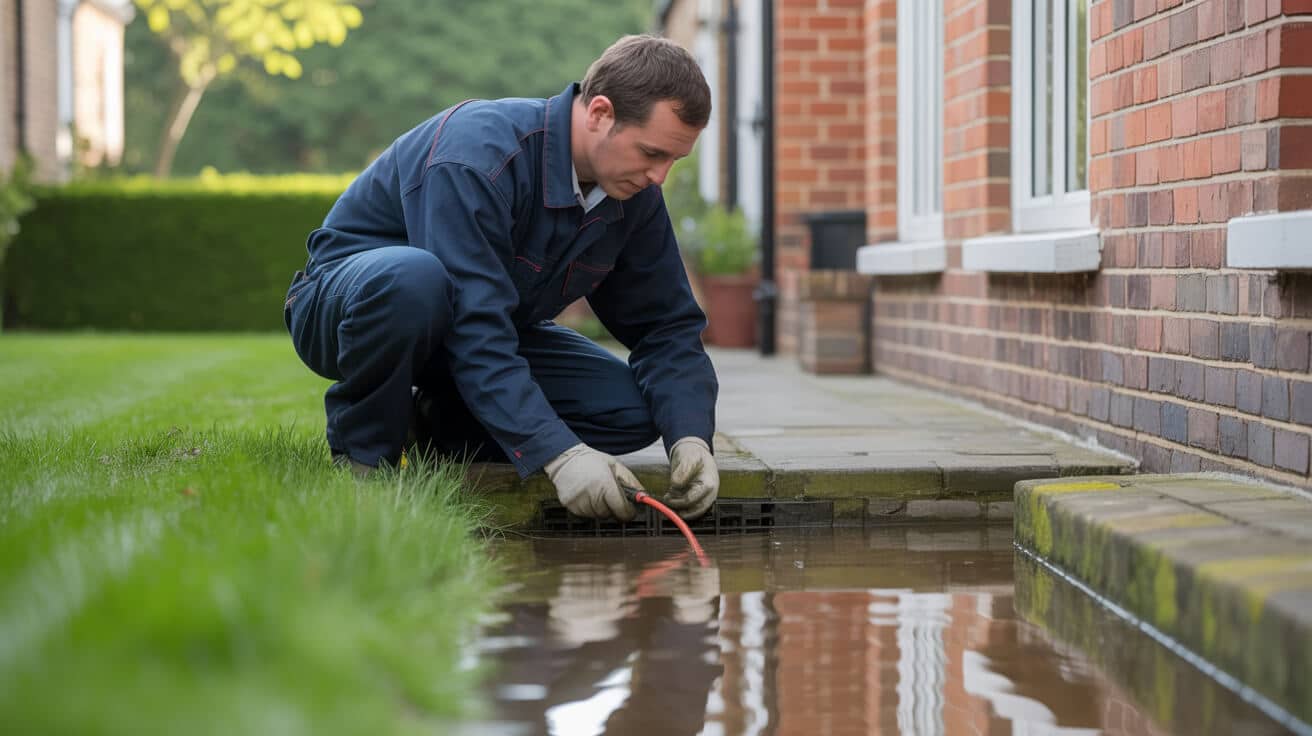 5 Telltale Signs Your Hot Water Cylinder Is About to Fail
5 Telltale Signs Your Hot Water Cylinder Is About to Fail

How Can You Tell If Your Hot Water Cylinder Is Headed for Failure—or Head Off Disruption Before It Strikes?
When you’re responsible for properties, hot water cylinder failure isn’t just a nuisance—it’s a liability test. The real skill lies in anticipating problems, not scrambling after disaster. Well-managed homes or tenancies come down to how consistently you spot silent warnings and act—whether that’s safeguarding comfort for families, avoiding business downtime, or upholding compliance standards for a broad property portfolio.
It’s often the overlooked detail—a faint sound, a tiny drip—that decides whether you act or end up dealing with aftermath.
Hot water cylinders are the workhorses of hygiene and convenience in UK properties. Every system—be it a vented stalwart fed by a storage tank or a modern, pressurised unvented cylinder—relies on a web of safety features and regulations (G3 certs, WRAS valves, annual service standards). When one weak link goes unnoticed, routine maintenance snowballs into stress: cold-water complaints, property damage, voided warranties, and—if you’re a landlord or agent—compliance headaches that can tank your reputation as fast as a bad winter leak.
This isn’t about scare tactics. It’s about practical advantage: knowing how to read your cylinder’s “language” puts you in control, gives you lower costs, and lets you deliver the sort of proactive property management that gets remembered (by tenants, clients, and insurers). In this guide, you’ll cut through theory to find the five most dependable warning signs—what they actually tell you, risks if you ignore them, and straightforward steps that buy you time, protect your investment, and cement trust. The result? Fewer emergencies, fewer invoices, and a stronger standing with those who count on you to manage it right.
What Counts as an Early Warning That Your Cylinder Is on the Brink?
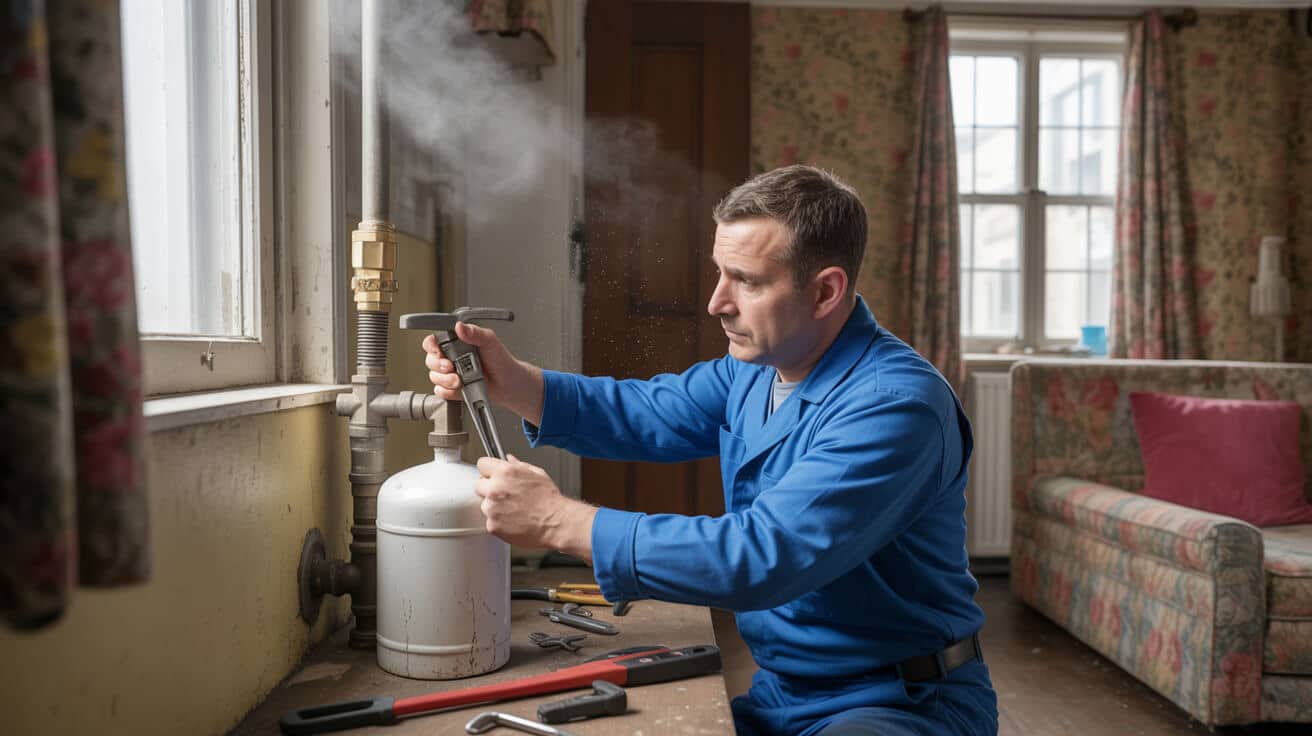
Every healthy UK hot water cylinder promises reliable delivery—consistent heat, regular recovery times, no drama at the taps. But no system goes from perfect to failure in a heartbeat. When cylinders start to falter, you’ll notice it not as a flood, but in small inconveniences: lukewarm morning showers, longer bath fill times, or a slow but persistent tendency to “run out.” A family member might comment on the slower heat-up time, or tenants report the water “feels off” compared to last year.
You rarely get an outright surprise—just a quiet window to intervene, if you’re paying attention.
Here’s what to watch for:
- Sudden or repeated drops in available hot water: , despite no changes to occupancy or demand.
- Temperature instability: —the water flips between scalding and cold, especially under consistent settings.
- Slow tank recovery: , where the system takes longer and longer to reheat, signposted by a heavier workload on the immersion heater.
- Element behaviour: —the boiler or immersion cycles more often, or with longer quieter gaps, signalling internal resistance.
These symptoms are almost always caused by a build-up: limescale choking heating elements, failing thermostat calibration, or sediment around the anode—issues spelled out in UK maintenance benchmarks (valiantenergy.com). Ignore them, and minor loss of efficiency morphs into total failure or urgent callouts.
Industry data lays it out clearly: 80% of “no hot water” crises stem from a pattern of warning signs that someone shrugged off. The intervention could have been as basic as an annual flush or thermostat check at less than one-tenth the price of a mid-winter cylinder swap or drying out a damp flat.
For landlords or managers, an annual inspection isn’t just defensive—it’s a reputational flex. It says you act before complaints land in your inbox or tenants go public with dissatisfaction. In every corner of property, prevention delivers better ROI than reaction ever could.
Why Are New Noises in Your Cylinder a Serious Clue—And Not Just “Old House Quirks”?
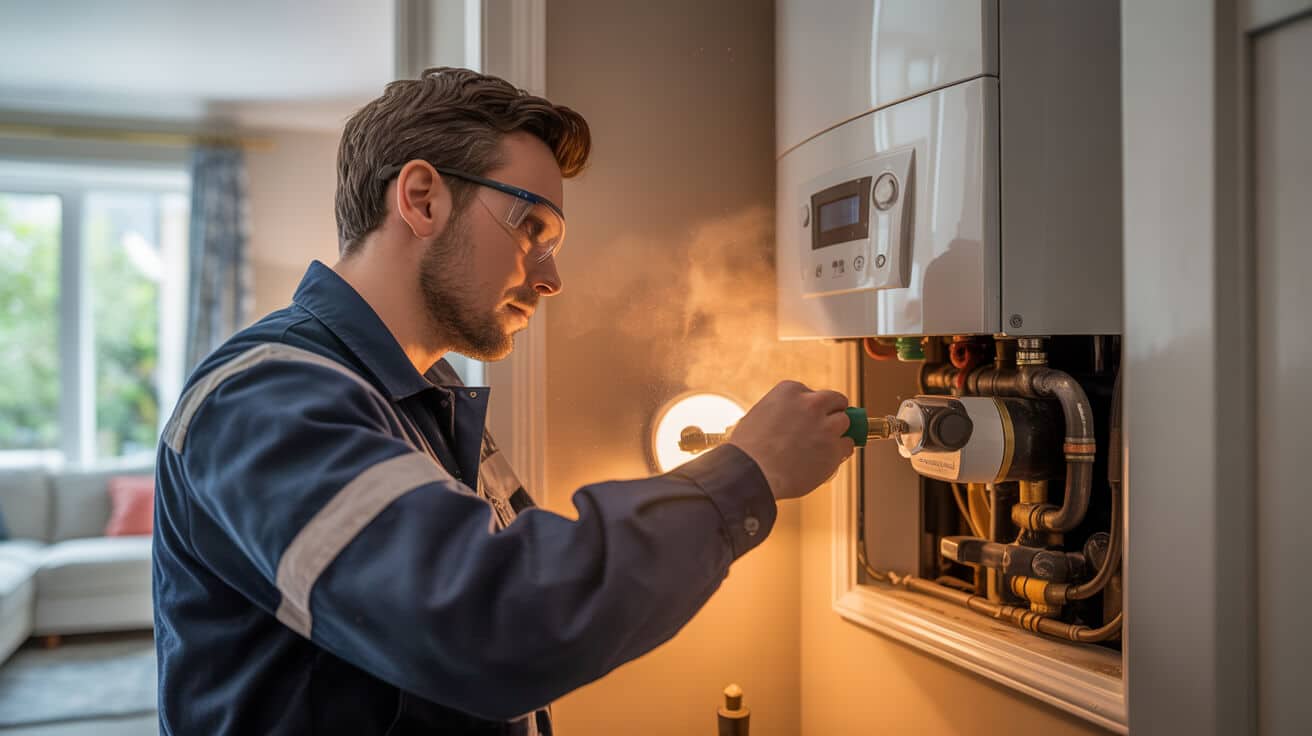
A healthy hot water cylinder runs with barely a whisper—just the faint movement of water and the quiet hum of pressure. The moment you pick up knocks, hissing, rumbling, or “popping” from the tank or airing cupboard, your system is sending a direct message: action is due. Noises are the sound of limescale, sludge, or trapped air pushing the cylinder into overdrive.
Most of the time, a noisy tank is your early warning bell—a chance to save money and avoid bigger repair bills.
Here’s the science: limescale and debris accumulate on the heating element or cylinder base, especially in hard water postcodes. As scale builds, hot pockets form, creating “mini steam kettles” that pop, tick, or bang. Pressure pulses can stress welds, seams, or internal linings. Engineers find that persistent new noises often precede leaks or element burnout within six months, especially when left to “just see if it settles”—a correlation backed up by both service data and consumer research (libertyhomeguard.com).
It isn’t only the mechanical risk. A noisy cylinder often burns through energy, as the system “fights” itself. For you, that means higher bills and reduced efficiency because the same scale that makes a racket insulates the element from the water, forcing longer cycles, hotter runs, and (over time) more aggressive breakdowns.
If a tenant, family member, or client records new noises (or you pick them up yourself), the smart move is a system flush, limescale treatment, or professional check-up. Acting now is not just defensive; it saves money and may stop a minor fault from breaching a tank or voiding the warranty outright.
When Does Rusty or Discoloured Hot Water Mean It’s Time for Action?

Seeing rusty, brown, or unusually cloudy water from the hot tap is more than a cosmetic glitch. Once is sometimes a result of external plumbing works or a rare water main event. But see it more than once, or as a faint and recurring tinge, and you’re glimpsing the earliest phases of internal corrosion in the cylinder. British regulations (for both vented and unvented systems) require inside tanks to be lined or protected with a sacrificial anode—a component designed to corrode so that your tank doesn’t.
Rust doesn’t just stain—it signals the clock is ticking for both your warranty and your compliance.
Brown or orange water is a sign that the anode could be spent or the lining is beginning to fail. Ignore it, and you invite decay that leads to leaks, hygiene risks, and when audits land on your desk (especially as a landlord or agent), non-compliance. A “faint trace” inside the tundish (the spill-off pipe witness) or at the seams is a prompt to act—not tomorrow, not at the next rent review, but now.
Recent UK data reveals that up to 35% of unplanned cylinder replacements could have been forestalled by basic interventions when discoloured water was first seen (heatingandplumbingworld.co.uk). The fix might be as simple as a flush, anode replacement, or early lining check—much cheaper than a post-failure rip-out involving redecorating, loss of tenant goodwill, or property devaluation.
For managers and owners with multiple units, a simple monthly visual check can protect you against regulatory and insurance risks. This isn’t just hygiene; it’s operational sense.
Why Are “Small Leaks” a Big Red Flag—Especially in Managed or Multi-Unit Properties?

There’s no such thing as a “harmless drip” from your hot water cylinder. pinned, mopped, or boxed-in damp patches near the base, insulation, or visible pipework usually mean only one thing: the system seal is failing. This isn’t something that “might settle”; it’s a risk multiplier, especially in multi-storey units, tower blocks, or ground-floor flats, where undetected hot water can migrate quickly into underlays, electrics, and neighbour’s ceilings.
Every major water claim started as a drip someone tried to forget about.
Insurer figures show that hidden cylinder leaks lead to claim values up to 20% higher than surface plumbing faults—because the pressurised hot water travels far and wide, increasing both immediate and delayed costs (laserplumbingteatatu.co.nz). For agents and landlords, this isn’t just about the repair bill; it’s about having your paperwork, compliance, and client confidence stand up when challenged.
Ignoring or postponing action creates a domino effect that rarely ends with just a towel—the damage scales rapidly, costs increase, and even your insurance excess may go up on repeat claims. The best practice: the moment you notice a drip, damp, or irregular wet mark, isolate, photograph, and call in a qualified plumber. If you move fast, you control the narrative; if you wait, you inherit the consequences.
Does Cylinder Age or Recurring Repair Mean It’s Time to Replace—Or Can You Keep Patching?
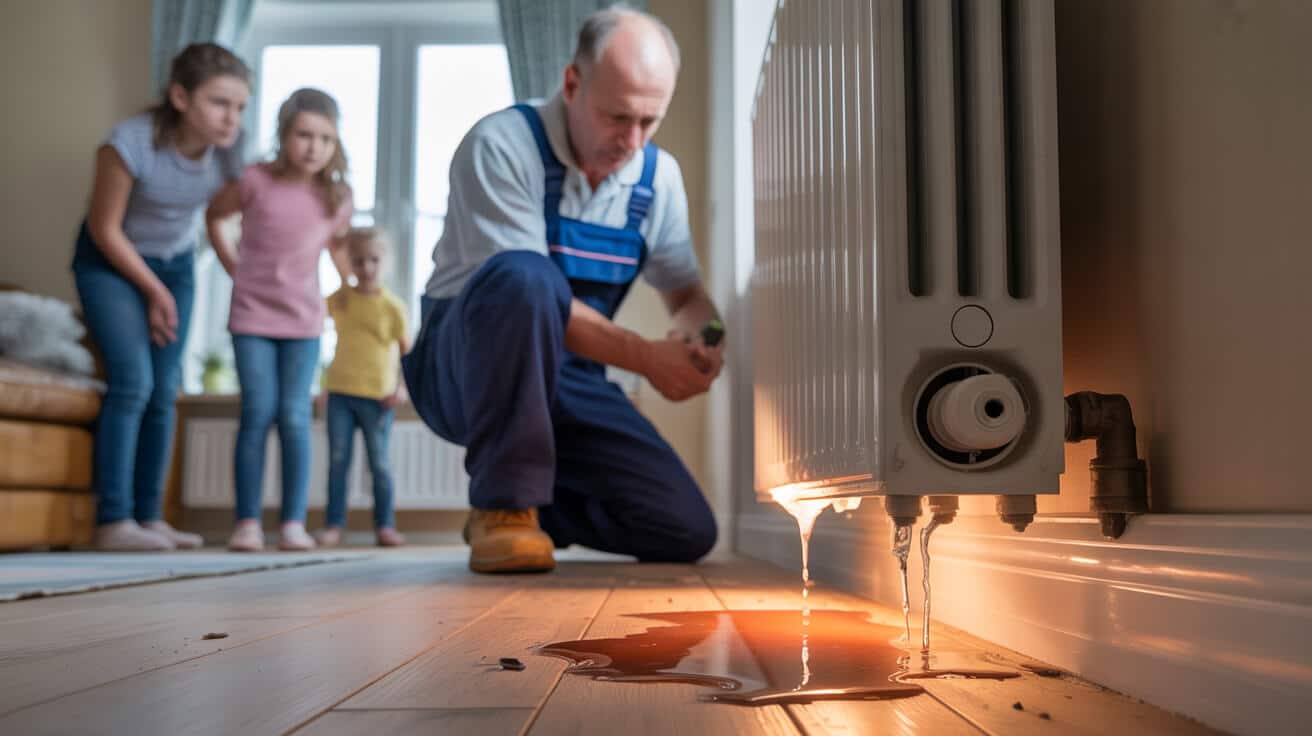
The lifespan of a typical UK cylinder? Around 10–12 years for well-serviced unvented tanks, sometimes a bit more for vented versions in low-limescale homes. But time doesn’t work in your favour here: as the years tick up, the risk of leaks or failure compounds, warranties expire, and repair bills (plus inconvenience) begin to multiply. Spot a pattern: if you’re “patching” more than once a year, or if faults start to feel routine, the system is telling you it’s beyond economical repair.
At a crossroads? Routine patching is where reputations stall, but scheduling an upgrade wins long-term trust.
According to large-scale property portfolio analysis, the total cost of multiple callouts or “stopgap” repairs past year 10 will often outpace a proactive cylinder replacement—especially when counting downtime, tenant disruption, and staff hours (easyflow.co.uk). Modern compliance trends, especially in lettings and commercial sites, push landlords and block managers to demonstrate documented servicing, prompt replacement, and “compliance in life”—not just at the first sign of crisis.
For you, the smart play is to track the instal date, keep a simple digital or hard-copy log, and make cylinder renewal a scheduled improvement—an upgrade, not a reactive cost. This approach slashes downtime, builds your “managerial stock,” and ensures your property remains comfortable, safe, and value-robust even as other systems age.
What Immediate Hazards Demand Attention, Even If There’s Still Hot Water?
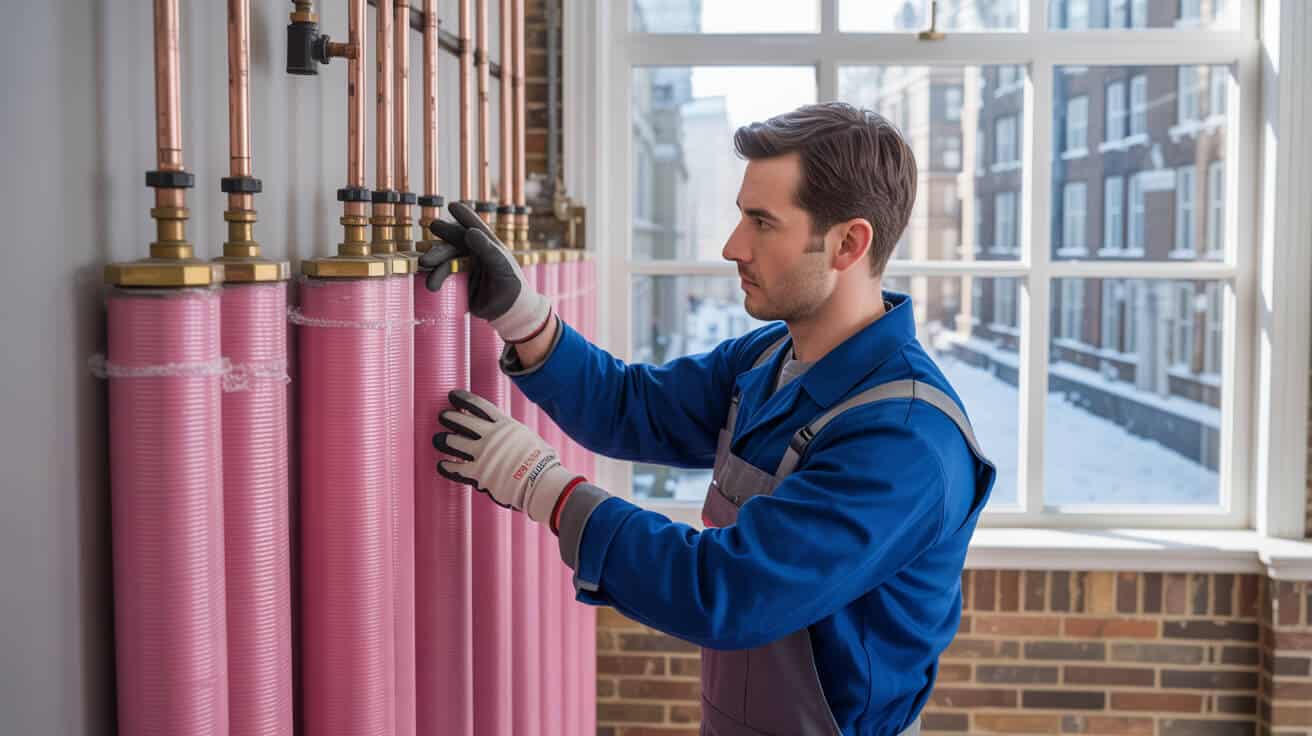
Not every warning sign ties directly to comfort or convenience. Hot water cylinders carry real legal and safety risks, particularly unvented models, which are governed by G3 regulations due to their pressurised design and higher failure impact. Ignore certain warning signals and you risk not only your property, but personal liability.
Here’s where “act now” isn’t optional:
- Drips, moisture, or staining near the TPR (Temperature/Pressure Relief) valve, especially if the surrounding insulation looks burnt or brittle.
- Any sign of melted insulation, singed wiring, or heat staining.
- Sudden “bangs” or ongoing hissing while the cylinder is heating.
- Water discharge from a tundish (the tell-tale overflow channel).
A live safety issue means it’s time to switch off and step back, not cross fingers.
Compliance is crisp: unvented cylinders with these signatures must be isolated and checked by a G3 certified engineer without delay. In a rental or commercial property, failing this step voids insurance cover, can trigger enforcement action from authorities, and puts you at risk of regulatory penalties (splashplumbing.com). The paperwork matters as much as the fix—document the issue, action, and the resolution for your records. It’s your defence if things escalate, and puts you in the “proactive manager” bracket that insurers and clients want to see.
Who Should Service or Replace Your Cylinder—and What Proofs Should You Get?
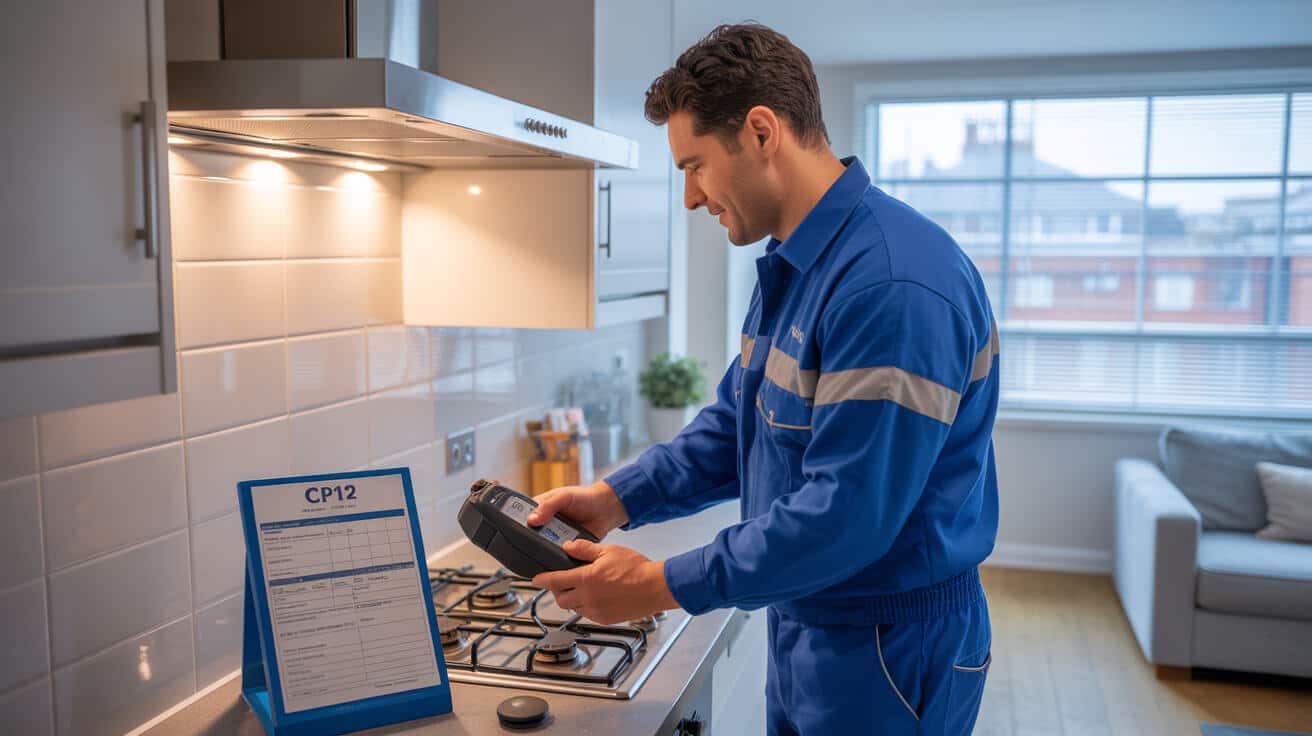
Not all “plumbers” are created equal, and nowhere is this more obvious than in cylinder maintenance or replacement. G3 certification is the UK’s line in the sand: any unvented cylinder, regardless of make or size, must only be opened or serviced by a certified engineer. Gas Safe comes into play for dual-fuel or combined systems. For every annual inspection, part swap, or new system instal, the engineer should supply visible credentials—G3 certificate, Gas Safe card, WaterSafe or WRAS membership.
A job is only truly finished when you hold the paperwork—and the photographic proof for your files.
The right pro doesn’t just do the job. They document it, log serials and part codes, complete benchmark logs, and issue any required regulatory certificates (including CP12 for systems with gas input). For block managers and agents, digital records count as a “duty of care” asset—a shield if tenants or inspectors ever “need to see what was done and when.” Landlords know that courts rarely favour oral assurance over a stamped certificate.
Under no circumstances is it worth cutting corners with non-accredited labour. Skip compliance, and you don’t just risk warranty denial or insurance refusal—you gamble with regulatory fines and, worse, safety.
Do yourself a favour: ask for, receive, and store the credentials every single time. The few minutes it takes saves weeks of grief if things don’t go to plan.
Book Plumbers 4U for Certified Cylinder Checks or Emergency Support
If your cylinder’s showing any warning sign—temperature changes, noises, discoloured water, or the faintest damp spot—why gamble? Stepping in early proves you’re the sort of homeowner, landlord, agent, or manager who puts diligence above delay.
The smallest check, done early, is a mark of responsibility—and usually costs less than a single emergency.
Plumbers 4U stands ready with only G3, WRAS, and WaterSafe certified engineers—a team that thrives on compliance, delivers photo evidence for every job, and treats your paperwork as protection, not red tape. For homeowners, landlords, agents or commercial property managers across the UK, our service means no upsell, no jargon, no corners cut—just complete documentation and the sort of transparent aftercare that’s become our trademark.
Cover yourself, your properties, and your professional standing: book a system check or urgent callout today, and let Plumbers 4U help you stay ahead of the unexpected—quietly, cleanly, and by the book.
Frequently Asked Questions
What subtle signs truly indicate your hot water cylinder is failing—and how early can you get control?
The danger signals from a struggling hot water cylinder aren’t always dramatic—often, they slip by unnoticed as early hints weeks (or months) before a fault becomes a crisis. If you spot water that runs hot, then suddenly cold, hear faint pops, bangs, or hissing right after heating cycles, or see unexplained moisture near the base of your tank, you’re seeing the early stages of internal wear.
Unusual smells, murky or rusty water, or even brief cold spells in routine showers point to hidden corrosion or scale, quietly undermining the cylinder’s efficiency and integrity. Every year, insurers cite “chronic,” slow leaks and untreated corrosion as the top causes of water damage claims for UK properties—costing homeowners and landlords thousands in preventable loss (ABI, 2024). Older cylinders without up-to-date maintenance logs or those requiring repeated callouts in a short span tend to be ticking time bombs. Overlooking these weak signals can mean missing out on easy, affordable repairs—while piling on risk for both tenants and owners.
Faults that feel minor rarely stay minor—left long enough, they become the most expensive kind of problem to inherit.
By completing monthly visual checks and listening for new sounds, you gain the upper hand. Scheduling annual service not only ticks the compliance box for landlords and local authorities, but buys you the margin needed to repair before failure sets in. And if your property is open to sale, letting, or inspection, a healthy logbook becomes a proof-point, not a hurdle.
Early warning, rapid response:
- Examine the base and visible joints for even minor leaks every few weeks.
- Be alert to changing water clarity, odd smells, or sounds from the cylinder soon after heating.
- Record and date every visit, repair, or “odd event” in a logbook.
- Hire a registered G3 engineer if you detect any change—especially in systems over 8–10 years old or those without recent professional review.
How do odd noises or murky water link to deeper hazards in modern hot water systems?
What starts as a “nuisance” symptom—a low rumble, a streak of brown in the sink, or a sharp drop in pressure—usually signals a technical fault buried inside the cylinder. Modern cylinders, especially unvented and pressurised models, depend on clean, well-balanced systems to manage high temperatures and pressures.
When limescale or sediment builds up, it makes the heating element overheat and attack the internal lining. This is when popping, banging, or gurgling tend to emerge—evidence of scale “hot spots” or trapped air, both of which multiply stress on the tank. Simultaneously, loss of pressure or cloudy hot water points directly to failing anode rods or corrosion, which can rapidly turn into leaks, water quality complaints, and compliance headaches for landlords.
Importantly, recurring noises or discolouration often mean a stuck or compromised temperature and pressure relief (TPR) valve—a legal and practical safeguard in UK hot water safety (G3 Regulations). If this fails unnoticed, internal pressure can rise dangerously during normal operation. In busy properties or where tenant complaints surface repeatedly, ignoring these warning signs can bring fines or invalidate property insurance.
Property managers who treat small symptoms as side notes end up budget-managing full-blown emergencies.
Quick diagnostic checks—like a flush, TPR/expansion valve test, or photographic evidence—let professionals cut off escalation early. Especially in shared or portfolio-managed properties, catching these incidents upfront saves untold hours in claims and legal squabbles.
Table: Fault clue vs. risk escalation
| Symptom | Underlying issue | If neglected |
|---|---|---|
| New banging or hissing | Scale, stress, air pockets | Element burnout or tank split |
| Rusty/cloudy hot water | Corrosion, anode worn out | Major leak, contamination |
| Sudden pressure drops | Valve fail/leak forming | Rapid leak, insurance breach |
What’s at stake if you keep using a hot water cylinder after warning signs appear?
Continuing to use a cylinder that’s “almost fine” nearly always escalates both safety and cost concerns. Pressurised cylinders—legal norm for new builds and upgrades—are designed with built-in protections for temperature, pressure, and water quality. If these are compromised, you’re flirting with structural risk.
A failing pressure or temperature valve makes explosive overpressure more than a theoretical risk; documented incidents show that overlooked leaks or failed discharge pipes have caused catastrophic tank rupture in the UK (HSE, 2023). Cylinders connected through electrical immersion heaters risk fire if leaks reach the wiring, while faulty venting raises the spectre of carbon monoxide in both gas-powered and hybrid systems.
For landlords, local authorities, or managers of managed properties, compliance breaches tie directly to insurance availability, letting rights, and tenant well-being. Multiple insurance providers now require documented annual service evidence and a log of any noted faults; non-compliance can mean reduced payouts or outright claim rejection even for accidental damage.
If any classic warnings emerge—noise, heat, water clarity shifts, or visible leaks—step one is stop using the system. Step two is isolating both electricity and mains water, and step three is booking a legally accredited (G3) engineer fast.
Every ignored cylinder warning erodes your legal safety net. Compliance is a checklist—once you skip a box, safety and insurance get dicey.
Crisis moves for property owners and managers
- Isolate the cylinder from mains water and electricity at the first sign of failure.
- Warn every user or tenant, especially if the property is multi-occupant.
- Document signs, including date-stamped photos for future reference or insurance.
- Identify a certified, reputable repair contractor—avoid ad-hoc or unproven sources.
When does it make more sense to replace rather than repair a faulty hot water cylinder?
The decision between fixing and replacing should come down to cold logic: cost comparison, age, safety, and operational predictability. In the early years of a cylinder (under 8–10 years), clear water, single-site leaks, or isolated element failures are usually best handled by a professional repair—especially if the service history is robust and paperwork is intact.
But when a cylinder is a decade or more old, develops repeated “minor” faults in under two years, or starts to show corrosion or rust in the water, every fix yields a smaller return. Sector-wide data from UK heating engineers reveals that tanks requiring two or more repairs in the last year are three times more likely to suffer catastrophic (main body) leaks within 12–24 months. Any repair quote above half the cost of new installation, or discovery of incomplete Benchmark documentation, strengthens the case to upgrade outright.
A transparent diagnosis from a trusted engineer—complete with clear cost breakdown and warranty/efficiency comparison—demystifies the choice. Replacement now also unlocks smart controls, higher energy ratings, and stronger resale options, which landlords or asset managers increasingly seek.
Think of each late-stage repair as a short-term patch on a ticking liability—the upgrade pays for itself, even more so when you factor in time and legal risk.
Checklist for the repair/replace dilemma:
- Confirm date of installation and tally total repairs in the last 24 months.
- Inspect for signs of rust at outlets—if recurring, lean toward replacement.
- Check if paperwork (Benchmark, warranty) is missing or expired.
- Compare your quote to published industry averages for full cylinder swaps.
- Review eligibility for grant-backed upgrades or energy-efficiency incentives.
Who is officially qualified to maintain, repair, or sign off a hot water cylinder—and what must you check?
UK law is unambiguous: only G3-certified engineers (plus Gas Safe qualification for gas-linked units) can legally repair, maintain, or replace unvented hot water cylinders. Without these credentials, any work becomes not just risky, but potentially uninsurable—and sometimes even criminal if harm follows in a let or public property.
Trustworthy engineers automatically display G3, WRAS, WaterSafe, or similar scheme badges on request. For gas-connected tanks, insist on the engineer’s Gas Safe ID; for compliance or letting, ask for company-wide WRAS or WaterSafe approval. Every legal repair or replacement finishes with a properly completed Benchmark logbook and written report—a vital insurance, warranty, and letting asset.
Employing an unqualified “fixer” or skipping the paperwork can see insurance claims denied, rental compliance voided, and, in worst cases, personal liability for costly property or injury claims.
Plumbers 4U entire team is WRAS, WaterSafe, and G3 qualified—every job is documented as standard, with paperwork provided before your handover walk-through.
Compliance confidence steps:
- Validate that the attending engineer has visible, current G3 (and Gas Safe, if relevant) documentation.
- Request secondary badges—WRAS, WaterSafe, or CIPHE—for added assurance.
- Triple-check the service book/Benchmark update with each visit or intervention.
- Secure both digital and hard-copy job reports to keep all parties covered.
- Never allow unaccredited or non-logged work on your cylinder.
How does acting quickly on warning signs protect your budget, tenants, and property reputation?
Swift action locks in real savings, limits property downtime, and cements your status as a pragmatic, trusted asset manager or landlord. Properties where repairs stretch beyond a warning sign almost always pay more later—UK insurance surveys routinely show that the average “escape of water” claim spirals past £7,500 for homes and £12,000 for commercial premises when advance warning is ignored (Water Damage Claims, 2024).
Delayed fixes can turn a one-hour callout into days of lost rent, flooring replacement, and even legal disputes with tenants or neighbouring owners. Landlords reporting frequent “no hot water” complaints or water-damaged communal spaces see a direct hit on tenant ratings, letting reviews, and even council penalties. By contrast, planned service or quick repairs can wrap in a matter of hours, maintain full compliance, and turn every encounter into reassurance for investors, auditors, and users.
Every hour spent waiting for a minor fault to fix itself grows your bill—respond fast, and you own the narrative and the outcome.
Organisations with thorough compliance, service, and job logs find it much easier to defend against both insurance pushback and council or tenant scrutiny—an invaluable buffer in a competitive, litigated market.
Table: Trigger event → Avoidable loss
| Trigger event | Timely repair cost | If delayed |
|---|---|---|
| Minor leak detected | £100–£250 | £3,000+ (major repairs) |
| Planned cylinder swap | £1,100–£1,600 | £7,500–£15,000 (claims) |
| Missed maintenance/let | £80–£180 | Possible fines or legal |
| Faulty discharge found | £170–£350 | Void warranty, big repairs |
Moves to save money and face:
- Record every sign, service, and engineer interaction.
- Prioritise fast, compliant action—trust your instincts, don’t procrastinate.
- Choose reputed, audited services (like Plumbers 4U), where compliance and documentation come standard.
—
Need your hot water system secured without shortcuts?
Plumbers 4U is staffed entirely by compliant, certified pros—your compliance, warranty, and property scorecard all covered in one visit.

